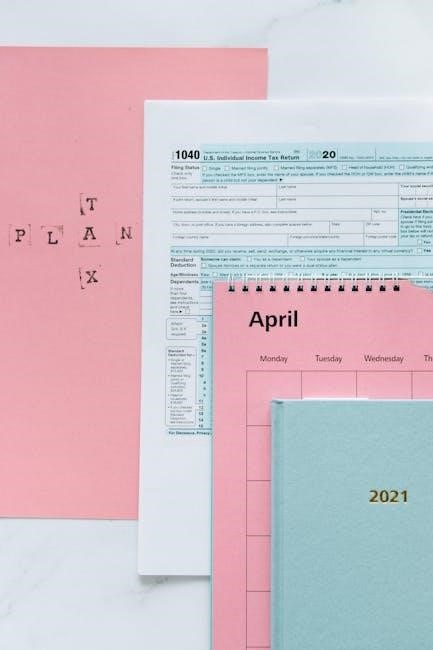
proofreaders instruction crossword clue 4 letters
Proofreaders Instruction Crossword Clue (4 Letters)
Solving crossword puzzles can be a fun challenge! When faced with the clue “Proofreaders instruction (4 letters),” several possibilities emerge. These common solutions often include terms related to editing and correcting text, commonly “DELE”, “STET”, “ITAL”.
Crossword puzzles present an engaging mental exercise, testing vocabulary, knowledge, and problem-solving skills. They consist of a grid of white and black squares, where solvers fill in the white squares with letters to form words or phrases. Clues are provided for each word, and the goal is to deduce the correct answers based on these clues and the intersecting letters.
Many clues rely on definitions, synonyms, or related concepts. Some clues are straightforward, while others are cryptic, requiring lateral thinking or knowledge of wordplay. Acronyms, abbreviations, and foreign words may also appear. A key aspect of solving crosswords is understanding the different types of clues and employing strategies such as pattern matching and letter combinations.
Successful solvers often use online tools and databases to assist them, enhancing their ability to tackle even the most challenging puzzles.
Common 4-Letter Answers
When tackling crossword clues, especially those specifying a four-letter answer related to proofreading, several words frequently appear. “DELE,” signifying deletion, is a common solution, indicating that text should be removed. “STET,” meaning “let it stand,” instructs to disregard a previous correction. “ITAL” is an abbreviation for italics, indicating a specific text formatting.
These terms are integral to the proofreading process and often appear in crossword puzzles due to their concise nature and direct relevance to the editing field. Understanding the definitions and applications of these terms is crucial for both solving crosswords and comprehending basic proofreading principles.
By familiarizing yourself with these common answers, you’ll increase your chances of correctly solving clues related to proofreading instructions in four-letter formats.

Specific 4-Letter Solutions
Let’s explore specific four-letter solutions commonly found in “proofreaders instruction” crossword clues. These include “DELE” (to delete), “STET” (let it stand), and “ITAL” (italicize). Each has a distinct meaning in proofreading.
DELE: Definition and Usage
The term “DELE” is a crucial instruction in proofreading, indicating that certain text should be deleted. Originating from the Latin word “deleatur,” meaning “let it be destroyed,” it’s a concise way for proofreaders to mark errors. The DELE mark typically looks like a stylized lowercase “d” or a diagonal line through the text to be removed.
Its usage is straightforward: when a proofreader identifies an unnecessary word, phrase, or character, they apply the DELE mark. This ensures that the typesetter or editor knows precisely what to omit, maintaining clarity and accuracy in the final document. It’s a fundamental tool in ensuring text conciseness.
STET: Definition and Usage
In proofreading, “STET” is a Latin term meaning “let it stand,” used to instruct that previously marked changes should be ignored. When a proofreader initially marks a section for deletion or alteration but then realizes it was correct, “STET” reinstates the original text.
The mark is typically written under the rejected text, often accompanied by dots or dashes. “STET” ensures that crucial information isn’t unintentionally removed. It serves as a safeguard against errors, allowing the original content to remain intact. The use of “STET” demonstrates the iterative nature of proofreading, where corrections can be reconsidered.
ITAL: Definition and Usage
“ITAL” is a proofreading mark indicating that the marked text should be set in italics. Italics are a typeface used to emphasize specific words or phrases, often to denote titles, foreign words, or to add stylistic flair. In proofreading, “ITAL” is written in the margin alongside the relevant text, signaling the typesetter to apply the italic font.
The use of italics adds a visual cue, drawing the reader’s attention to the intended portion. “ITAL” ensures consistency in formatting, especially when dealing with multiple instances of a particular element. It is a crucial tool in maintaining clarity and professionalism.

Other Potential Answers
Beyond the common answers, “EDIT”, “COPY” and “READ” may fit, depending on the crossword’s specific nuance. These options relate to the broader tasks associated with proofreading, offering alternative solutions.
Exploring Less Common Options
While “DELE,” “STET,” and “ITAL” are frequent solutions, less obvious four-letter words could also apply to a “Proofreaders instruction” clue. Consider words that imply action or correction within the proofreading process. “SCAN” could refer to closely examining text. “MARK” might indicate adding notations for changes. “NOTE” could involve leaving comments for the author or editor. “FIND” suggests locating errors within the document.
These alternatives depend heavily on the specific crossword’s theme and the surrounding clues. A playful or cryptic puzzle might favor a more abstract or indirect answer. Always consider the context of the entire crossword grid when evaluating potential solutions beyond the most common ones.

Contextual Clues
The publication where the crossword appears—such as the NYT or LA Times—can provide insight. Some publications favor specific vocabularies or styles, influencing the likely answer to “Proofreaders instruction (4 letters).”
Publication Specific Answers (NYT, LA Times, etc.)
Different crossword publications, such as The New York Times (NYT) or the Los Angeles Times (LA Times), may have distinct preferences for certain answers. When tackling a “Proofreaders instruction (4 letters)” clue, it’s crucial to consider the publication’s style. The NYT, known for its sophisticated vocabulary, might favor a less common term, whereas the LA Times might lean towards a more straightforward answer.
For example, “DELE,” “STET,” or “ITAL” are all plausible, but their likelihood can shift based on the puzzle’s source; Paying attention to the publication can narrow down possibilities and increase your chances of selecting the correct solution within the 4-letter constraint.

Related Crossword Clues
Crossword clues related to “Proofreaders instruction” often involve terms like “Proofreaders mark,” “Editing instruction,” or “Leave in, in proofreading”. These clues share the theme of correcting and refining text, linking to potential 4-letter answers.
Proofreader’s Mark Variations
Proofreader’s marks come in various forms, each indicating a specific type of correction. Variations include symbols for deletion (“DELE”), reinstatement (“STET”), insertion, and transposition. These marks are essential for clear communication between proofreaders and typesetters. Different publications and style guides might slightly alter these symbols. Understanding these variations helps in accurately interpreting a proofreader’s instructions. For crossword puzzles, recognizing the context of these marks is crucial. The “Proofreaders mark” clue often leads to 4-letter answers like “DELE” or “STET,” reflecting common proofreading actions. Familiarity with these symbols enhances crossword solving skills, especially when dealing with editing-related clues.
Using Crossword Solvers
Online crossword solvers can be invaluable tools. They assist in finding answers, especially for tricky clues like “Proofreaders instruction (4 letters)”. These solvers offer suggestions based on known letters and patterns, speeding up the solving process.
Online Tools and Databases
Several online tools and databases are available to assist with solving crossword puzzles, particularly when encountering clues like “Proofreaders instruction (4 letters)”. These resources often include extensive lists of possible answers based on the clue’s length and any known letters. Crossword solver websites allow users to input the clue or the pattern of letters they have, and the tool generates a list of potential solutions.
Many of these databases are community-driven, meaning they are continuously updated with new clues and answers. Some tools even offer advanced search options, enabling users to filter results by publication, date, or specific themes. Utilizing these online resources can significantly improve your crossword-solving speed and accuracy.
Understanding Proofreading Marks
Understanding proofreading marks is crucial for solving crossword clues related to editing. These marks are shorthand instructions used by proofreaders to communicate necessary changes to text, such as deletions or insertions.
Purpose and Function
Proofreading marks serve as a standardized language between editors, proofreaders, and typesetters. Their primary purpose is to clearly communicate necessary corrections and revisions to a document before its final publication. These marks address errors in spelling, grammar, punctuation, and formatting, ensuring accuracy and consistency.
The function of proofreading marks extends beyond simple error correction; they also convey stylistic preferences and maintain uniformity throughout a text. By using universally recognized symbols and abbreviations, proofreaders can efficiently highlight areas needing attention, minimizing ambiguity and streamlining the editing process. Ultimately, proofreading marks contribute to producing polished, professional, and error-free documents.
Tips for Solving Crosswords
Effective crossword solving involves pattern matching and letter combinations. Look for common word endings (like -ING, -ED, -ION) and frequent letter pairings (such as QU, TH, ER). Consider the clue’s context and any related entries.
Pattern Matching and Letter Combinations
When tackling crossword clues, especially those related to proofreading terms, pattern matching and letter combinations are invaluable techniques. Start by analyzing the number of letters in the answer; this immediately narrows down the possibilities. If you already have some letters filled in from intersecting words, focus on words that fit that specific pattern. Common letter combinations in the English language, such as “ST,” “TH,” “ER,” and “ING,” can also guide your search.
Consider common prefixes and suffixes used in proofreading terminology. For instance, knowing that “DE-” can indicate removal or reversal might help when deciphering a clue related to deleting text. Similarly, recognizing potential anagrams or words that sound alike (homophones) can unlock seemingly difficult clues. Always be mindful of the overall theme of the crossword, as this can offer hints about the types of words being sought.
Summarizing Key Solutions
When tackling the crossword clue “Proofreaders instruction (4 letters),” several key solutions frequently surface; The most common answers include “DELE,” signifying deletion; “STET,” indicating that a previously marked change should be retained; and “ITAL,” denoting that text should be italicized.
Understanding these terms is essential for crossword enthusiasts. Each word represents a specific instruction used in the proofreading process, making them prime candidates for this type of clue. Recognizing these common solutions can greatly assist in solving similar crossword puzzles.
Furthermore, familiarizing oneself with proofreading marks and terminology enhances overall crossword-solving skills, particularly when dealing with clues related to editing and publishing.


Leave a Reply
You must be logged in to post a comment.